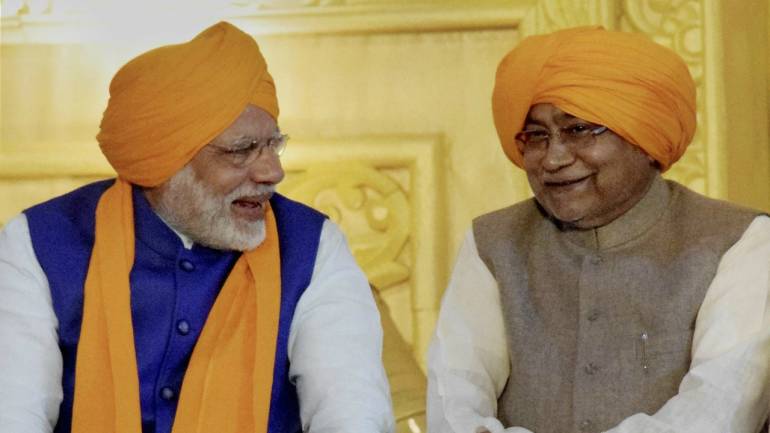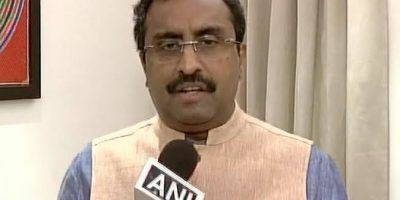Bihar provides the template for marquee NDA govt schemes

Officials believe that a good scheme is worth emulating, specifically if it has worked in states such as Uttar Pradesh and Bihar. Bihar CM had come up with ‘Saat Nischay’ programme, with electricity and water being the core commitments
In what has caught the attention of public policy mandarins at the Centre, many a schemes piloted by Nitish Kumar headed Bihar Government have been adopted by the National Democratic Alliance (NDA) government for a national roll-out. The latest case in point being the Nal Se Jal scheme for piped water supply for which Bihar’s Har Ghar Nal Ka Jal programme served as a template.
Earlier, it was Bihar’s Har Ghar Bijli Yojana scheme, launched in November 2016 to provide electricity connection to over 5 million households in the state that provided the blue print for the Union government’s Rs 16,320-crore Pradhan Mantri Sahaj Bijli Har Ghar Yojana (Saubhagya) to provide electricity connections to over 40 million families in rural and urban areas.
Officials believe that a good scheme is worth emulating, specifically if it has worked in states such as Uttar Pradesh and Bihar.
“A good scheme is a good scheme, wherever it has been started. It is true that many marquee schemes of Bihar such as Har Ghar Bijli Yojana and Har Ghar Nal Ka Jal have been studied and adopted by the centre,” said a union government official requesting anonymity.
The Bihar government’s water supply scheme aims to provide clean drinking water to around two crore households, without any discrimination and end their dependence on hand-pumps (chapakal).
Bihar chief minister Nitish Kumar had come up with ‘Saat Nischay’ or ‘7 Points’ programme, with electricity and water being the core commitments. With the BJP-JD(U) trouncing the Mahagatbandhan in Bihar in the last general elections, one common refrain from voters in the state was the need to reward good governance particularly in critical areas such as electricity access and water supply.
“We are happy that the government at the centre has taken a leaf out of our way of doing things for rolling out these prestigious national level schemes,” said a senior Patna based Bihar government official who also did not want to be named.
While the grandeur of ancient Magadha Kingdom as described by Megasthenes, ambassador to the court of Chandragupta Maurya may still be some time away, Bihar’s social welfare schemes have been attracting public policy wonks from across the country and overseas for conducting academic research and field studies.
In her budget speech, finance minister Nirmala Sitharaman said the Jal Shakti Ministry—which will combine the operations of the erstwhile water resources, river development and Ganga rejuvenation ministries—will work with states to ensure every rural house gets piped water by 2024.
According to the brokerage firm JM Financial the NDA government’s Nal Se Jal scheme for piped water supply will need Rs 6.3 lakh crore in investment.
Bihar has many a first to its credit. All the 39,073 revenue villages in the state received electricity access in December 2017, much before all of India’s 597,464 census villages got electrified in April 2018. With the electricity reaching all villages through the marque Deen Dayal Upadhyaya Gram Jyoti Yojana (DDUGJY), it was a game-changer moment for readying the country towards achieving universal electricity access.
“We started Har Ghar Bijli Yojana in November 2016. A national workshop was held by the ministry of power on 8 and 9 August 2017 in Patna, where we had delegates from 16 states. Apart from the presentation, we took them to the districts where there was no paper work involved and everything was app-driven,” said Pratyaya Amrit, principal secretary, energy, for Bihar in an interview to Mint last year.
The twin measures of increase in tie-ups for power generation and strengthening the distribution network adopted by the Bihar government helped the state achieve 20 hours of average electricity supply. This in turn increased the state’s per capita electricity consumption from 75 per kWh in 2005 to 360 kWh, despite negligible industrialization.
Water availability is another crisis area for India. According to the NITI Aayog report, nearly 600 million Indians face “high to extreme water stress”, while 75 percent households do not have drinking water on their premises. At the same time, about 2 lakh people die every year due to inadequate access to safe water. While the report reflects that 70 percent of the water in the country is contaminated, it also raises alarm bells wherein 21 cities, including Delhi, Bengaluru, Chennai and Hyderabad, will face a massive shortage and run out of groundwater by 2020, affecting 100 million people.




Comments are Closed